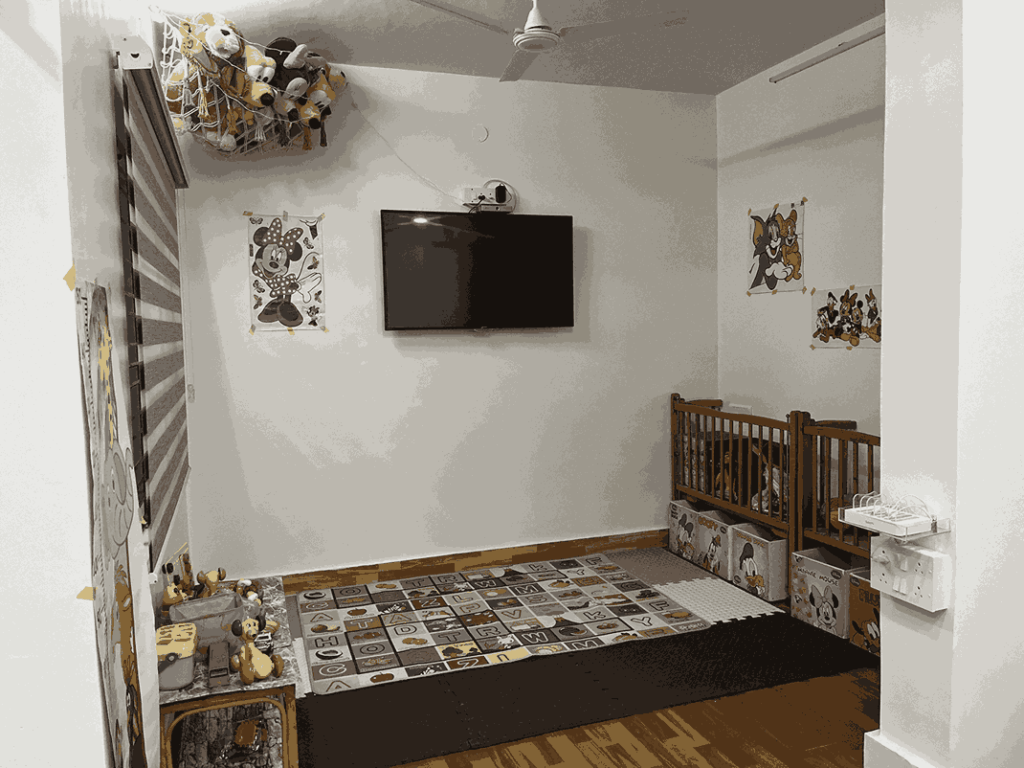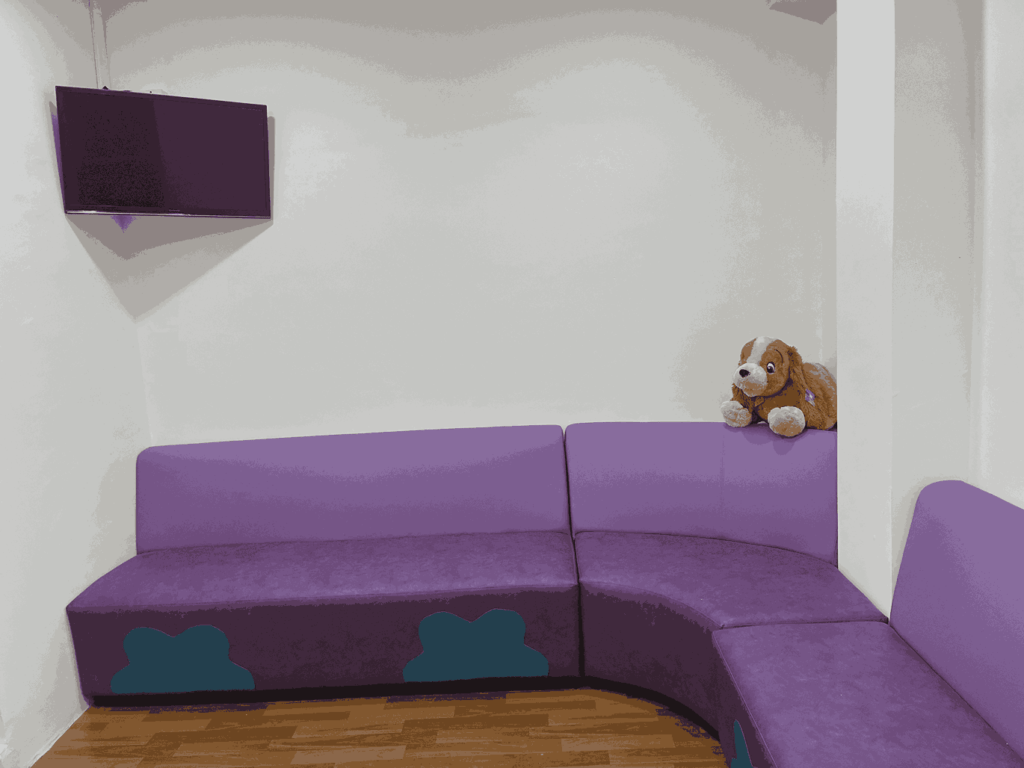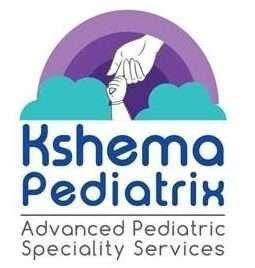Pediatric Laparoscopic Surgery in Bangalore
30 Years of Clinical Practice
Dr. Ramesh Santhanakrishnan, a senior Pediatric Surgeon with nearly 30 years of clinical practice in Bangalore.
☑️ Specialized Pediatric Care: Focuses on advanced pediatric surgery and medical services.
☑️ Experienced Team: Led by Dr. Ramesh Santhanakrishnan with over 30 years of experience.
☑️ Comprehensive Services: Includes Pediatric Surgery, Urology, Neurology, ENT, Gastroenterology, and more.
☑️ Compassionate Care: Committed to providing ethical, child-friendly treatment.
☑️ Modern Facilities: Equipped with state-of-the-art medical equipment for pediatric needs.
A Sneek Peak into our Clinic




Testimonials
What Our Little Patients Say
“You’re the nicest doctor ever! Can you be my doctor forever?”
Doctor is very cooperative.
Clinic has plenty of toys for the kids to play.
Also, kids get chocolates for the consultation 🙂
Am thankful to Dr Ramesh, who has around 30 years of experience and highly excellence in pediatric surgeon.
My son had complicated hydrouretero nephrosis at the age of 2 and half years and he treated this very well and we bit worried at that moment. The way he was given assurance , we felt very happy and feel free . Now my son is 13 years old and there is no any health problems till now and as our concern , he is one of the Best paediatric surgeon. .. and he is the Best doctor.
Finally I would like to say Thank you for saving my child.
Fill the Form below to get in Touch
Pediatric Laparoscopic Surgery in Bangalore – A Parent’s Complete Guide
No parent can hear that their child has to undergo surgery without feeling their pulse quicken in response. Will my little one feel pain? How long will recovery take? Is it safe? These concerns are entirely natural, and precisely why this one-of-a-kind, comprehensive, unbiased, and well-researched guide exists for pediatric laparoscopic surgery in Bangalore.
Unlike the traditional “open” way of doing the surgery, which involves large incisions, smaller incisions and a camera-tipped scope are used in laparoscopic or “keyhole” surgery, resulting in less pain, less scarring, and a quicker bounce-back to school or play. Investments have been made in Bengaluru to the extent that world-class health centers like Aster CMI Hospital, Cloudnine Hospitals, Manipal Hospitals, and Rainbow Children’s Hospital have made provisions for child-specific laparoscopic towers, pediatric-trained anesthetists, and 24/7 intensive care teams to deliver truly family-centered care.
Inside this guide, you’ll find easily digestible answers to common safety concerns, surgery timeline, recovery lists, cost brackets, surgeon qualifications, as well as FAQ-style “people-also-ask” blocks — all the information you need to arm yourself with certainty when deciding on pediatric laparoscopic surgery in Bangalore. Let’s turn fear into comfort and make your child’s surgery as gentle as possible.
What Is Pediatric Laparoscopic (Keyhole) Surgery?
Pediatric laparoscopic surgery, or keyhole surgery for children, is one type of minimally invasive surgery performed for the diagnosis and treatment of a range of conditions in infants, children, and adolescents. Open surgery necessitates relatively large incisions, whereas laparoscopic operations are made through minor cuts that are often only about 0.5–1 cm.
Surgeons use a thin, flexible tube known as a laparoscope to guide the operation through one of the small incisions. The device has a camera and a light source that beams instant images back to a monitor that allows her surgical team to see inside the child’s abdomen. Depending on the operation, more trocars (medical devices used in surgery) are inserted through additional small incisions, allowing the surgery to be performed with greater accuracy.
Laparoscopic surgery has several advantages over open surgery in the pediatric population. These include:
Its tissue-friendliness, particularly important in a growing child’s body
Less Post-Op Pain, Which Usually Equates to Less Meds and Faster Comfort
Quicker recovery so kids can return to their everyday activities and school more quickly
Reduced hospital stay and wound infection probability
Good aesthetic results with minimum scarring
The pediatric laparoscope is frequently indicated for use in appendicitis, hernias, undescended testes, ovarian cysts, and gastroesophageal reflux disease (GERD).
To put it simply, pediatric laparoscopy is about providing your child with the safest and least invasive surgical option that exists, without sacrificing quality of care or effectiveness. Thanks to modern-day pediatric surgical techniques and best-in-class clinics in Bangalore, parents are increasingly more willing to consider keyhole surgery for their children.
Why Laparoscopy Is Preferred for Children
In pediatric surgery, laparoscopy is emerging as the procedure of choice. Laparoscopy has now become one of the most sought-after treatments by pediatric surgeons in top Bangalore hospitals, including Rainbow Children’s Hospital and Aster CMI Hospital, due to its benefits for children.
That is why pediatric laparoscopic surgery is so well-liked:
Less Scarring: Small incisions mean your child will have minimal to no noticeable scars, eliminating potential cosmetic issues down the road.
Shorter Hospital Stay: Most children go home in 24-48 hours instead of 4-7 days with an open surgery.
Quicker Recovery: Kids can return to school and play after a week or two, not a month or more.
Minimized Blood Loss: Small cuts mean less internal damage and less blood loss.
Reduced Risk of Infection: Smaller incisions heal more quickly and are less susceptible to infection.
Conditions Commonly Treated by Pediatric Laparoscopy
Pediatric laparoscopic surgery in Bangalore is increasingly the minimally invasive choice of treatment for numerous abdominal and pelvic conditions in kids, including newborns and teens. Its safety, accuracy, and minimal recovery time for the procedure have made pediatric specialists at leading hospitals, such as Manipal, Cloudnine, and Aster CMI, prescribe it for young kids.
The following are the more common conditions that are treated using minimally invasive procedures:
Appendectomy:
An agent for treating appendicitis in children. Laparoscopic appendectomy in children causes less pain, allows quicker recovery, and reduces the complication rate compared to open surgery.
Inguinal Hernia Repair:
It is one of the most common pediatric operations. In children, laparoscopic hernia surgery means surgeons can examine both sides of the groin and repair any hidden hernias, limiting recurrence.
Cholecystectomy (removal of the gallbladder)
Performed for gallstones or any disease of the gallbladder. Minimally invasive children’s surgery achieves less injury to the bile duct and rapid recovery.
Fundoplication for GERD:
It is when used in children with severe acid reflux that this procedure can help tighten the lower esophageal sphincter. Laparoscopy is more effective and less painful.
Hirschsprung’s Disease:
Congenital disability of the large intestine: Laparoscopic surgery in children facilitates accurate resection of the affected segment and decreases the risk of complications.
Cysts of the Ovary in Adolescent Girls:
Laparoscopic removal is minimally invasive and can preserve the ovarian tissue, with minimal post-operative scarring.
From pediatric urology conditions to bowel procedures, laparoscopy has expanded to multiple specialties, enabling children to receive the most gentle and effective treatment available.
Is Laparoscopic Surgery Safe for Children?
The answer is an unequivocal yes, provided that pediatric surgeons in certified hospitals properly execute it. When performed correctly, a pediatric laparoscopy has a complication rate of less than 1%, according to the Indian Association of Pediatric Surgeons (IAPS).
Here are some reasons why laparoscopic surgery is a safe option for children:
Specialized Pediatric Teams:
Hospitals like Rainbow Children’s Hospital and Sagar Hospitals have pediatric surgeons performing children’s surgery using minimally invasive techniques, supported by a pediatric anesthesiologist and a pediatric critical care team.
Anesthesia Safety:
They are increasingly low-risk with advances in pediatric anesthesia and monitoring. According to the World Health Organization (WHO), modern anesthesia is safe for young children when the provider is trained in pediatric care.
Low Complication Rates:
Post-surgery infections, bleeding, and organ damage are very uncommon. Most children can make a full recovery without lasting repercussions.
Known risk factors were adequately mitigated:
High-risk children (such as those with low birth weight or a history of respiratory problems) are thoroughly assessed for safety.
“Laparoscopic surgery in children, performed by experts, is safe and efficacious, with magnanimous benefits to confer over open surgery.” – Indian Association of Pediatric Surgeons (IAPS)
No surgery is without its risks, and the problems that can arise during pediatric laparoscopic surgery, which is particularly challenging due to working within a smaller body space, are easily overcome by experienced teams in Bangalore. The result? A safer, gentler way to heal your child.
What Age Is Pediatric Surgery For?
Pediatric surgery embraces the entire phase of childhood, from delicate neonates just a few hours old to adolescents of approximately 18 years. Their small airways, underdeveloped organs, and low blood volumes make anaesthesia and fluid management more technically challenging in neonates (birth to 28 days) and infants (1–12 months). Young children also experience separation anxiety that needs to be helped along by special psychological preparation. School-aged children tend to tolerate procedures well, and in teenagers , the cosmetic advantages of keyhole scars are evident.
Laparoscopy eligibility for children depends on the type of operation being performed, and your surgeon will consider size, weight, and comorbidity rather than age (by calendar date) alone. At most institutions, even infants weighing less than 3 kg can undergo interventions in a minimally invasive manner by a board-certified Pediatric Clinical Team in a certified institution. Parents who wonder how old is too old for pediatric surgery can breathe easy: it extends to adulthood, providing continuity through those transitional years.
Expert Pediatric Laparoscopic Surgeons in Bangalore
Some of the best pediatric laparoscopic surgeons in India are based in Bangalore, with decades of experience and the capability to provide world-class care through advanced training. These are not just surgeons with superlative skills in the field of minimally invasive surgery, but also heads of pediatric surgical associations, such as IAPS, and hold prestigious fellowships, including FACS (Fellow of the American College of Surgeons).
Dr Sridhar Murthy – Rainbow Children’s Hospital
A leader in pediatric laparoscopic and thoracoscopic surgery, Dr. Murthy has over 20 years of experience. He is one of the finest pediatric surgeons not only in the country but also on the entire subcontinent, known for his dexterity and empathetic state of care. With experience in complex congenital anomalies and minimally invasive abdominal surgeries, he is a known name in Bangalore and beyond.
Dr. Dhiraj Balaji – Aster CMI Hospital
A specialist with expertise in complex Pediatric gastrointestinal surgeries, Dr. Balaji has introduced many novel laparoscopic procedures to Aster CMI. He contributes to national IAPS conferences and maintains an active research profile. His patient-centered approach yields personalized surgical plans for optimal results.
Dr. Ramesh S – Manipal Hospital
Dr. Ramesh brings strong experience in pediatric general surgery and urologic laparoscopy. He has been praised for his expertise in managing hernias, appendicitis, and complex urological conditions with the aid of keyhole surgery techniques. He is affiliated with numerous surgical societies and is recognized for his contributions to training young surgeons.
Dr. Sridhar K – Cloudnine Hospitals:
Dr. Sridhar K specializes in Pediatric minimal access surgeries within the various branches of Cloudnine in Bangalore. He is well-known for his gentle approach with child patients and performing minimally invasive surgeries with extremely short recovery times.
These doctors serve as a testament to Bangalore being a center for laparoscopic pediatric surgery, which provides excellent reassurance to parents that their children are in safe hands.
Step-by-Step Process of Pediatric Laparoscopic Surgery
A meticulously developed procedure for children, pediatric laparoscopic surgery is performed through a systematically designed route, which is controlled, accurate, and results in the fastest recovery exit.
Pre-Surgery Consultation
Preoperatively, a child will undergo a thorough clinical workup, including a comprehensive clinical examination and applicable diagnostic imaging, such as ultrasound or MRI. Blood testing is done to gain a good sense of the body’s well-being and to detect if the body is hiding an illness. The surgeon reviews the operation, anticipated results, and potential complications with the parents. A pediatric anesthetist also sees the child to ensure that anesthesia is adjusted carefully to account for the child’s age and health.
Day of Surgery
The child comes to the hospital’s operating theatre (OT) well-prepared on the day of surgery. Following last vitals and pre-anesthetic evaluation, the child is rendered unconscious, free of pain, and unresponsive while motionless using general anesthesia. Laparoscopic surgery typically requires 30 minutes to 2 hours to complete, depending on the procedure’s complexity. Surgeons cut small incisions and insert a laparoscope and surgical tools into the patient to operate while watching live images on a monitor.
Post-Op Recovery & Care
The child is then observed in a pediatric intensive care unit or recovery room following surgery. The majority of children are comfortable within a few hours, and pain control is maximized with pediatric analgesia. Most patients are discharged from the hospital between 24 and 72 hours, depending on the procedure and recovery rate. Detailed discharge instructions are provided for parents, including wound management, dietary guidelines, and activity limitations. The majority of children can usually resume regular school and sports activities in 1 to 2 weeks.
This staged concept is based on safety, low postoperative disruption, and early return to everyday life—an ideal characteristic for pediatric laparoscopic surgery.
Recovery Tips for Parents After Surgery
Your child’s care after pediatric laparoscopic surgery is critical. The following are crucial post-op instructions.
Diet: Gradually introduce light, semi-solid food as recommended by the surgeon, and keep the child well-hydrated. Refrain from eating anything heavy or oily in the beginning, so your stomach doesn’t get upset.
Bath: Do not bathe your child for 48 hours after surgery to keep the dressings dry. Use only gentle soap on the incisions, including those over half of the incisions.
Care of Incisions Scar Care: Keep small laparoscopic scars clean and dry. Potion up if necessary, and don’t let your scars catch even one glimpse of the sun if you don’t want them to darken.
Pain Control: Take pain relief medication as prescribed. Look out for these signs of extreme pain or swelling, and contact your doctor if they worsen.
Wound Checks (Post-Surgery): Ensure you follow up with all wound checks for stitch removal (if needed) and a healing review.
When to Call the Doctor: If you notice fever, ongoing vomiting, increased redness or discharge from the incision, or an exhausted child, call your child’s doctor right away.
These after-care procedures following pediatric surgery will help your child heal as quickly and comfortably as possible.
Pediatric Laparoscopic Surgery Costs in Bangalore
Generally, the price for pediatric laparoscopy in Bangalore may range from ₹65,000 to₹1,40,000, which also depends on different factors, some of them are as follows:
Complicated surgeries, such as fundoplication, may be more expensive than routine appendectomies.
Hospital category: High-end multispecialty hospitals levy higher costs than small setups.
Surgeon’s Experience: Well-known surgeons who are experts in the field may charge more but are more likely to provide safe and effective results.
Insurance: Most hospitals fall under the insurance purview, and TPA empanelment reduces the out-of-pocket cost.
Many hospitals also provide free initial consultations or teleconsults to help parents weigh their options before making a decision.
Challenges and Limitations of Pediatric Laparoscopy
Although pediatric laparoscopic surgery has many advantages, there are also some difficulties:
Fetlaparoscopy: Microscopic anatomy in the neonate and infant. The tiny abdomen. The abdominal cavity in neonates and infants is small, and operating in such a confined space requires specialized instruments and great skill.
Availability of equipment: Many hospitals, especially those in rural or small-city settings, may not be equipped with advanced pediatric laparoscopic instruments.
Skill gap among surgeons: Many areas, apart from major metros like Bangalore, do not have a pool of surgeons trained exclusively in pediatric laparoscopy.
Cost barriers: The initial, expensive setup costs and maintenance costs restrict access in smaller hospitals, making it unaffordable to many families.
Recognition of these barriers to paediatric minimally invasive surgery enables parents to have realistic expectations and opt for the most appropriate care. Progressive developments are closing the gaps, but especially in infants, there are still limitations for a cautious surgical selection.
How to Choose the Right Pediatric Laparoscopic Surgeon or Hospital
Selecting a head and neck surgeon and hospital for your child’s laparoscopic surgery. Here’s a quick checklist to assist in your choosing the best care:
Surgeon’s Qualifications: Check for Board certification and membership in organizations such as the Indian Association of Pediatric Surgeons (IAPS).
Experience with pediatric cases: Inquire about the number of pediatric laparoscopic surgeries the surgeon has performed, especially for your child’s specific case.
NICU/PICU facilities: Confirm that the hospital has a well-stocked Neonatal Intensive Care Unit (NICU) and Pediatric Intensive Care Unit (PICU) for postoperative care.
Kid-friendly infrastructure: You should have infrastructure that is comfortable and low-stress for children, such as play spaces and staff who are child-friendly.
Peer-reviewed ratings or reviews: Always look for platforms like JustDial, Practo, or Google Reviews to get feedback from other parents, so you have a fair idea about the reputation and patient satisfaction.
Frequently Asked Questions (FAQ)
Yes, laparoscopic surgery is generally safe for children when done by experienced surgeons! It is less invasive and has fewer complications than open surgery. However, the Indian Association of Pediatric Surgeons (IAPS) says complications are rare, and the majority of children make a speedy recovery with very little pain.
Modalities of pediatric surgery commonly include patients from neonates (newborns) up to 18 years of age. Infants and toddlers can be safely operated on, even using laparoscopy, due to their smaller body size and differential physiology; however, extra attention is paid to these younger patients.
Dr. Sridhar Murthy is a senior pediatric laparoscopic & thoracoscopic surgeon in Bangalore with a career span of more than 20 years. He works at Rainbow Children’s Hospital and is associated with the Indian Association of Pediatric Surgeons (IAPS), having received numerous awards and peer recognitions.
Laparoscopy is classified as low to intermediate risk, particularly in the hands of experienced pediatric surgeons. The risks include infection, bleeding, or damage to surrounding organs, but these are rare. Despite this, the minimally invasive approach could further lower the margin of risk compared to the traditional open procedure. The potential for complications during anesthesia is also lower with pediatric anesthesiologists.
It may be challenging to work in very confined anatomical spaces, such as in newborns, which demands specific tools and skills. The availability and cost of equipment in smaller hospitals are also barriers to access. A deficiency in surgical skills among rural providers persists.
A majority of children require 2–4 days of rest after the laparoscopic procedure and a gradual return to their usual activities. Healing is typically complete within 1–2 weeks. Adhere to the surgeon’s post-operative care for optimal healing.
In teenage girls with laparoscopic surgery, a bra can be worn after the operation when incision sites have healed (usually in 1 to 2 weeks). Initially, steer clear of tight or underwired bras to reduce irritation. This question does not apply to younger children.
Yes, the preference for most kids is laparoscopic surgery because there are smaller incisions, less pain, faster recovery, less scarring, and less risk of infection. Nevertheless, open laparotomy continues to be justified in complicated or emergency cases.
For children, surgery is generally very safe, particularly when performed in specialized pediatric institutions with dedicated surgeons and pediatric anesthesiologists. The addition of advanced techniques, such as laparoscopy, improves safety and results even further.


